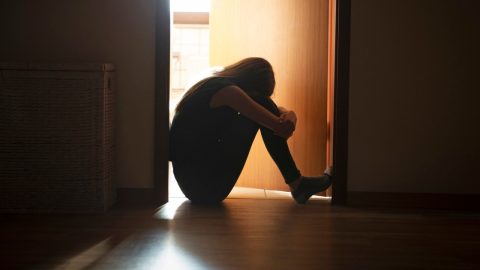Franklin Dobbs, a 76-year-old patient of Pappas’, also had pre-existing lung problems before he was diagnosed with aspergillosis last year. Dobbs said he hemorrhaged on and off for about a year before getting diagnosed. His case has thus far not proved drug-resistant.
An azole called Noxafil improved his symptoms, Dobbs said, though he still feels weak.
“I’m still having a problem with the strength in my legs,” he said.
Dobbs believes he might have been exposed while planting tomatoes, corn and peas in the garden, or while building birdhouses outdoors.
An April study found that people can get infected with drug-resistant Aspergillus from their home gardens. The researchers collected lung samples from infected patients in the U.K. and Ireland, and matched some of them to drug-resistant strains in the environments nearby.
Sometimes, a single high-dose exposure, such as a cloud of spores released by digging in soil, can be enough to trigger a fungal infection. But in many cases, people are gradually exposed to Aspergillus over months before they become ill.
“This is an extremely concerning superbug-type situation,” Armstrong-James said. “We’re all inhaling this all the time. So potentially, we could all be inhaling resistant Aspergillus on a daily basis.”
Unlike Aspergillus, Candida auris is mostly detected in hospitals, among people who are on breathing or feeding tubes or receiving a central line (an IV catheter that administers fluids, blood or medication).
“When you have one of those medical interventions that are in patients, you become at risk of it getting into your bloodstream or creating an abscess, and that’s when it’s very dangerous,” said Luis Ostrosky, chief of infectious diseases at UTHealth Houston and Memorial Hermann Hospital.
More than 90% of Candida auris strains are resistant to the common azole fluconazole, and up to 73% are resistant to another called voriconazole. Some strains also have resistance to the drug Fairweather recently stopped taking.
“You can end up with a patient with a Candida auris infection where you actually don’t have an antifungal to use for that patient. It’s resistant to everything,” Ostrosky said. “Basically those patients go to hospice and die, and there’s nothing you can do.”
Why mold is growing resistant to drugs
Researchers have pinpointed two main drivers of antifungal resistance: human drugs and chemicals used in agriculture.
Farmers often rely on fungicides, but over time, certain strains of mold become resistant. And since fungicides are chemically similar to antifungal drugs, some mold strains develop resistance to the medications too.
The 65-year-old man who died of invasive aspergillosis, for instance, was infected with a strain linked to agricultural fungicide use, according to the CDC.
“Bulbs and onions that have been dipped in these antifungals so they don’t spoil are almost like time bombs. When they’re planted, the fungicides that are on their surface will leak out into the environment,” said Armstrong-James, who co-authored the April study on Aspergillus.
“That could be a key breeding ground for resistance,” he added.

Drug use contributes to resistance when antifungal drugs are prescribed too often, or if doctors don’t prescribe a high enough dosage or long enough treatment course. That can then put selective pressure on fungi.
“The more you use antifungals or antibacterials, the more resistance that you see,” Pappas said.
Armstrong-James said that hospitals see resistance to Candida auris more frequently than to Aspergillus.
“Every time anyone takes fluconazole, you can get Candida resistance,” he said.
Climate change and Covid may each play a role
Climate change may be catalyzing the spread of both Aspergillus and Candida auris.
That’s because rising temperatures can lead to more fungicide resistance. Some research suggests that climate change was a key driver of Candida auris’ first appearance in people in 2009.
“Within a very short period of time, you’ve got the emergence of four or five different families of Candida auris more or less co-emerging simultaneously. How does that happen? It really screams if there’s something going on in the environment,” Pappas said. “There’s decent evidence that climate change is at least one of the triggers.”
Some experts worry that as climate change’s effects intensify, even some healthy people could get fungal infections.
“Whilst there’s no evidence for the moment that a perfectly well person could get a severe Aspergillus infection, there’s nothing to say that, with the changing environments, that might not change in the future,” Armstrong-James said.
On top of all this came the Covid pandemic, which created new opportunities for Candida auris to spread. A July CDC report found that these infections rose 60% in health care settings from 2019 to 2020.
“Invasive Candida infections just skyrocketed with Covid, presumably because all these patients were sick,” Pappas said. “They were given broad spectrum antibiotics. They had lines and ventilators and all the things that you need to generate invasive Candida.”
The CDC report found that staffing shortages and lengthy patient stays, among other factors, made it difficult for some hospitals to prevent drug-resistant infections.
“We were having all these traveling nurses that came from different parts of the country that weren’t necessarily attuned to the protocols that the hospital normally has to prevent bloodstream infections,” Ostrosky said.

New treatment options could take years
Doctors say they’re in a race against time, since current treatments could stop working before new ones become available.
“If we don’t manage resistance right now and if we don’t boost the pipeline for the antifungals, we may very easily end up in a place in five to 10 years where you’re having end-of-life discussions with a patient that has an invasive Candida infection,” Ostrosky said. “It’s just unthinkable right now that your loved one can go into the hospital and have an appendectomy, and they get a complication, and they end up with a bug that’s untreatable.”
Several drugs have entered late-stage studies that could produce results in the next year or two, experts said.
But Fairweather isn’t sure she’ll get a chance to try them.
“How much damage will be done to my lungs before these things come into effect?” she said.
Plus, fungi could develop resistance to new medications over time.
“Once they’re out there, they get overused and then pretty quickly, they’re no longer useful,” Pappas said.








Recent Comments